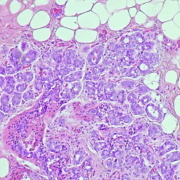BioNTech is set to open a research centre for cancer therapy in the United Kingdom, much to the delight of the British government, which is helping pave the way with a substantial financial boost.
ADVERTISEMENT
Organized by the Society for Laboratory Automation and Screening (SLAS), the premier automation conference in Europe, the SLAS Europe 2025 (20-22. May 2025), will showcase the latest technologies and drug discovery enablers. As part of its preview series, European Biotechnology Magazine profiles 12 of Europe’s most innovative AveNew SMEs – this edition features Austrian LifeTaq-Analytics GmbH.
British investment firm SV Health Investors has secured US$269m for its second fund, Dementia Discovery Fund, or DDF-2. The capital will be used to invest in companies developing or enabling novel therapeutics for dementia.
French biotech firm Massalia Therapeutics SA has been launched, backed by seed funding from Landmark Bioventures, the company founders and their network. The company claims to have an IND-ready, first-in-class drug candidate poised to target both cancer and fibrosis.
Belgian Imec researchers have presented a prototype of an ingestible sensor for long-term gut health monitoring that is able to measure acidifidation that is linked to gut inflammation.
With one week remaining before the opening of SLAS Europe 2025—the continent’s largest event dedicated to laboratory automation and drug screening—preparations are nearing completion. The conference, organised by the Society for Laboratory Automation and Screening (SLAS), is set to take place in Hamburg from 20–22 May. As part of a dedicated series, European Biotechnology Magazine is profiling twelve innovative SMEs participating in the SLAS Innovation AveNEW programme. One of them is Instromeda Ltd., a finalist for the SLAS Ignite Award.
Just few days to go until SLAS Europe 2025 takes place in Hamburg from 20–22 May. Organized by the Society for Laboratory Automation and Screening (SLAS), the premier automation conference in Europe will showcase the latest technologies and drug discovery enablers. As part of its preview series, European Biotechnology Magazine profiles 12 of Europe’s most innovative AveNew SMEs – this edition features Netherlands-based NestEgg Labs BV.
Just one week to go until SLAS Europe 2025 takes place in Hamburg from 20–22 May. Organized by the Society for Laboratory Automation and Screening (SLAS), the premier automation conference in Europe will showcase the latest technologies and drug discovery enablers. As part of its preview series, European Biotechnology Magazine profiles 12 of Europe’s most innovative AveNew SMEs – this edition features UK-based Unicorn Biotechnologies.
On May 12, 2025, President Donald Trump signed an executive order aiming to drastically reduce U.S. prescription drug prices by aligning them with the lowest prices paid in other developed nations—a policy known as the “Most Favored Nation” (MFN) approach. While the initiative seeks to alleviate the financial burden on American patients, it has sparked intense debate over its potential ramifications on global pharmaceutical trade, investment patterns, and the United States’ leadership in biomedical innovation.
Belgian lysosomal storage disease specialist Azafaros BV has added a new lead investor to its portfolio. In addition to €25m Series A leader Forbion, Jeito Captial co-led a €132m Series B round aimed at advancing two pivotal trials of Azafaros‘ lead compound nizabagloustat (AZ-3102).


 BioNTech
BioNTech LifeTaq Analytics GmbH
LifeTaq Analytics GmbH Image by storyset on Freepik
Image by storyset on Freepik Adobe stock_DMH
Adobe stock_DMH Imec
Imec Instromeda Ltd
Instromeda Ltd Nestegg Lab BV'
Nestegg Lab BV' Unicorn Biotechnology Ltd.
Unicorn Biotechnology Ltd. Jeremy Levin, Ovid Therapeutics
Jeremy Levin, Ovid Therapeutics Romi - adobe stock.com
Romi - adobe stock.com